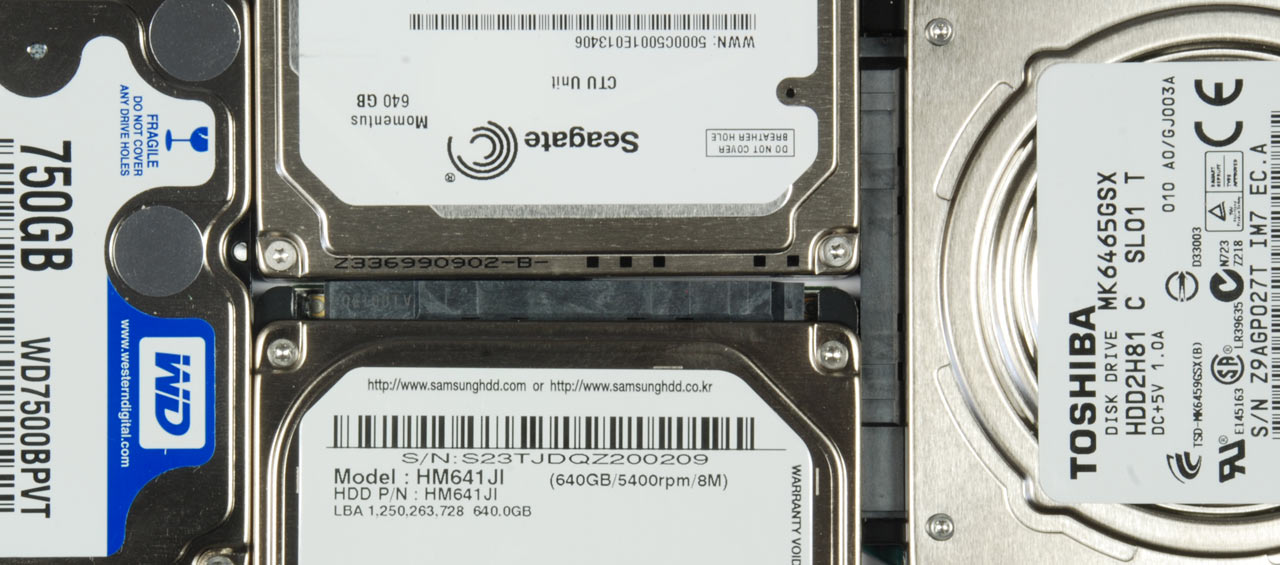Notebook Hard Drives: 750GB And 640GB Models Reviewed
Remember when 500GB was the most you could get from a notebook drive? It seems like most vendors have made the transition to 640GB. Western Digital even has its own 750GB model that fits within the 9.5 mm z-height. So, which of these drives is the best?
Notebook Hard Drives Closing In On 1TB
Up until recently, 640GB was the maximum notebook hard drive capacity. There are two exceptions, though. Hitachi has yet to release a 2.5” drive beyond 500GB, and Western Digital is shipping a 750GB now. We secured samples of all 640GB or higher drives for this mobile storage roundup.
Is Perpendicular Magnetic Recording Hitting Limits?
Perpendicular magnetic recording (PMR) technology was introduced in 2005 as a replacement for longitudinal recording. The perpendicular approach allows hard drive manufacturers to move data bits closer together. This significantly helped to increase data density over several product generations and across all hard drive segments. PMR was necessary to move beyond 500GB on 3.5” hard drives, and it enabled 2.5” notebook hard drives to go from 250GB to where they are today.
However, there are limits to magnetic recording, the most important one being the superparamagnetic effect, wherein individual magnetized bits start influencing each other. When this happens, magnetization can suddenly reverse and the data represented by those bits gets scrambled. This is why it will be important to deploy new technologies, so that further increases in data density can be achieved. Two much-discussed technologies are patterned media and heat-assisted recording. Patterned media takes advantage of photolithography to structure the disc surface into uniform segments, rather than a loose bunch of magnetic grains. The pattern enables a decrease in the space required to store a single bit. Heat-assisted recording utilizes a laser to heat a highly-stable magnetic compound, such as iron-platinum.
4K Sector Size Coming
Right now, all firms are transitioning their mainstream products to a sector size of 4KB, instead of 512 bytes. This decreases the capacity required to store ECC data for error correction, and hence frees capacity for the user. Please read the article Characteristics of 4K Sector Size to learn about the performance pitfalls that still exist with operating systems older than Windows 7 and Vista.
Let’s now look at the four highest-capacity 2.5” notebook hard drives available at a z-height of 9.5 mm: the Samsung Spinpoint M7E, Seagate Barracuda 5,400 RPM, Toshiba GSX 640GB, and Western Digital Scorpio Blue 750GB.
Get Tom's Hardware's best news and in-depth reviews, straight to your inbox.
Current page: Notebook Hard Drives Closing In On 1TB
Next Page Samsung Spinpoint M7E HM641JI (640GB)
